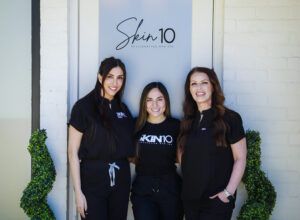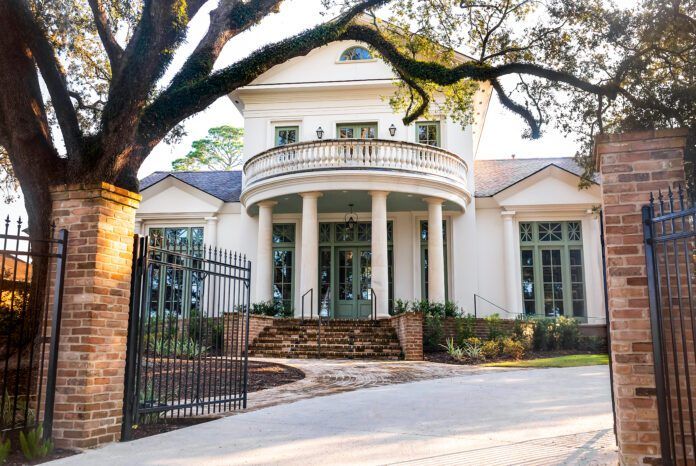Stamp of the South – Laurie Aronson reclaims and revamps the iconic Haspel menswear brand
Gregory Peck wore a Haspel seersucker suit in To Kill a Mockingbird. Louisiana Gov. Huey P. Long donned the threads with flair, and Presidents Franklin Roosevelt and Harry Truman made the ensemble a White House staple. Celebrities in every era—from Humphrey Bogart and Cary Grant to Jimmy Smits and Luke Wilson—have been spotted in Haspel suits as have countless other actors, producers and directors of the TV and film industries, on screen as well as on the red carpet.
This Southern sensation of a suit came straight out of New Orleans.
In 1909, Crescent City clothier Joseph Haspel used lightweight seersucker, a fabric traditionally worn by laborers, to create a cool solution for businessmen working in Louisiana’s summer heat. Soon everyone from politicians to preppy college boys clamored to wear the stripes. The Haspel brand grew into a household name.
In 1977 Joseph Haspel Jr. sold the company. It went through new ownership three times, until the family bought the brand back in 1998. For the last 15 fall runway seasons, the family licensed the name Haspel to another company to make the clothing—until this year.
“I knew that to make a statement in the marketplace, we had to do something different—radically different,” says Laurie Aronson, president and CEO of Baton Rouge-based Haspel. “We’ve terminated our licensing agreements and are now doing everything on our own.”
More than a century after her great-grandfather put his stamp on Southern style, Aronson is planning a resurgence. She is revamping the brand with the set goal of appealing to a broader audience. The company is now in control of all design and fabric decisions and handles the manufacturing of the brand as well.
To help create the new menswear line, due out in spring of 2014, Aronson hired two “hot, young designers” in New York City: Sam Shipley and Jeff Halmos. They run their own label, Shipley & Halmos, which is sold in several big retailers, but the duo is taking on Haspel, too. For Aronson, the interview process was extensive, but the final decision was simple.
“Shipley and Halmos were really just the best fit for us,” says Aronson. “We like their taste, attitude and feel for our clothing. And I love how they do their own line.”
While the new Haspel brand gives a gracious nod to its classic wash-and-wear seersucker suits, there is more in store than just lightweight fabrics and tailored attire. Look for fall and winter designs as well as a full collection of sportswear and accessories. Although traditionally recognized for its summer suits, Haspel is now a 12-month brand.
“Consumers who are familiar with Haspel will see the same commitment to quality and excellence,” says Aronson. “But they will see a lot more options. This new line will also appeal to a whole group of people who have never been exposed to the brand before.”
While updates to its style selections are in the works, Haspel’s manufacturing is also getting an overhaul.
“To really make a splash, I wanted to have everything made here in the U.S.,” Aronson says. “I knew it would be a more expensive option for us, but the consumer has become more willing to pay more for American-made goods.”
Most of the clothing will be produced in factories located in New England, with suit prices retailing just below the traditional designer levels in the $795-$1,200 range.
Aronson is leading this charge of many changes at Haspel. She also serves as the CEO and president of Lipsey’s Wholesale Firearms Distributor, where her father, Richard Lipsey, is chairman.
Aronson notes that Haspel’s trajectory, since the family reclaimed its clothing company, has been gradual—with good reason. “We found out that our brand was for sale, and we bought it back. We didn’t know what we were going to do with it when we bought it,” she recalls. “We acquired no assets other than the name. They literally shipped us a box of labels.”
At the time, her father simply went to New York and found someone to license the name. In the years following, Aronson rose from management to leadership of both Lipsey’s and Haspel. With little experience in the apparel manufacturing business, she dedicated herself to learning as much as she could, and to surrounding herself with the very brightest in the industry. She envisioned an exceptional, au courant future for Haspel. That future, as they say, is now.
“We are doing things that we have never done before,” says Aronson, who radiates excitement about the menswear line.
There will be a launch party for the new Haspel line in New Orleans in the spring, and the company’s website for the line will be up and running this fall. Collections will be shown at project tradeshows in Las Vegas and New York City. Haspel’s Manhattan showroom opened in SoHo this summer. Eventually Haspel menswear will be sold in clothing stores around the globe.
“I have to believe that both my grandfather and my great-grandfather would be so proud that we are bringing the magic back to the brand,” says Aronson. “The new Haspel has the same attitude and feel as the brand had in its heyday.”











